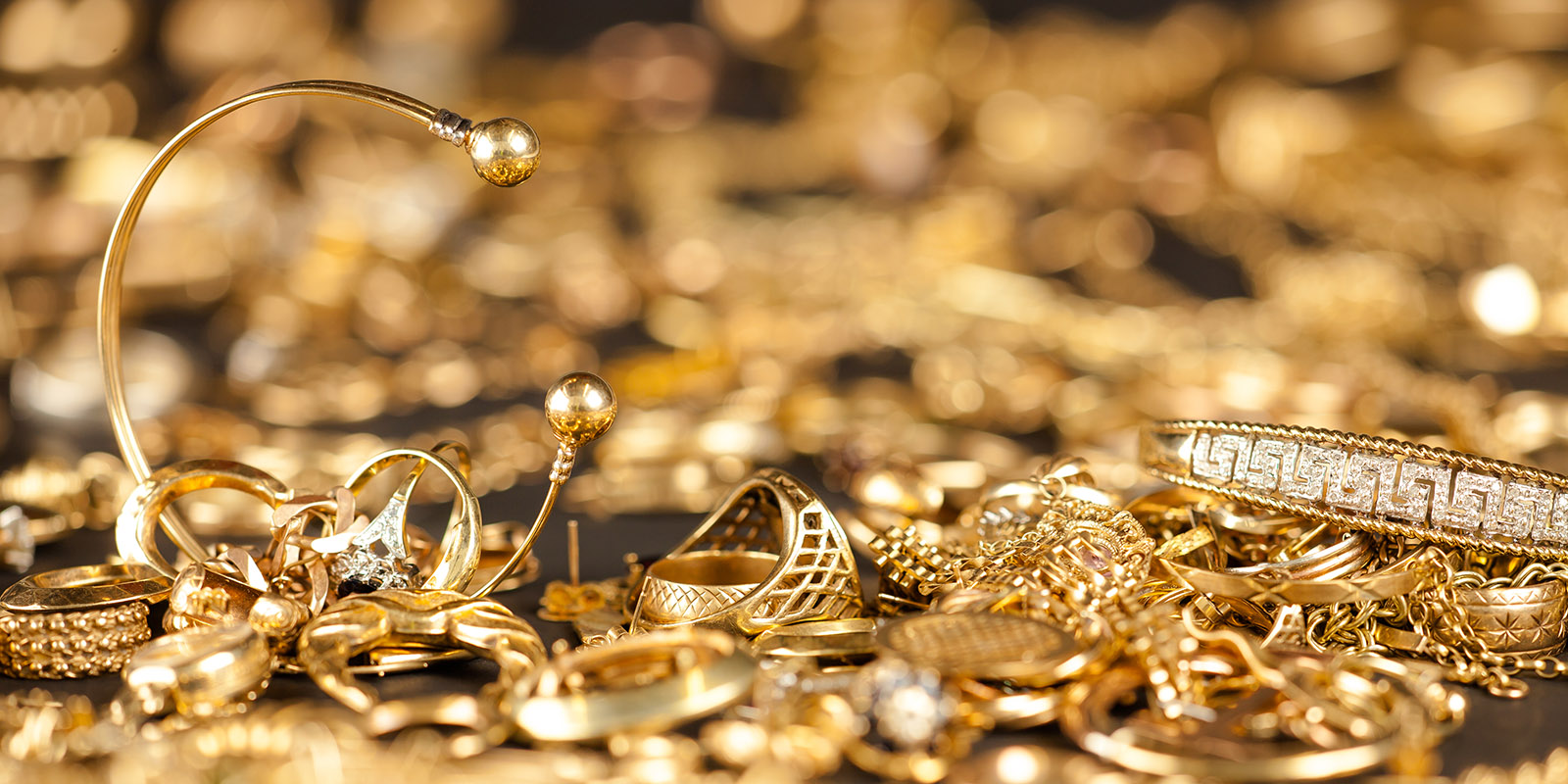Throughout human history, gold has been one of the most coveted and highly valued materials in the world. Even dating back to ancient times, it has held a significance of status and beauty that set it apart from all other precious metals.
Today, gold is still highly sought after and revered, and has evolved to take on many different forms and variations. Here is a look at the different uses of gold based on color, plating, and karat.
Pure gold
In its purest form, gold is a bright yellow material that is soft and highly malleable. Because of this, pure gold is in many cases too soft to be used in jewelry by itself. Instead, it is typically combined with other metal alloys to increase its strength. This combination also has an impact on the color, appearance, and karat (gold content) of gold jewelry.
The different colors of gold
The color of gold is determined by the types and quantities of alloys mixed with it. Not only is a gold piece’s color a consideration for visual appeal, but you may also keep it in mind when attempting to match jewelry with your skin tone or clothing style.
Here are some of the most popular colors of gold.
Yellow gold
Yellow gold is the most naturally occurring color of gold and also represents gold in its purest form. It is made by combining pure gold with metals like copper, silver, and zinc. Yellow gold is also the most hypoallergenic color of gold, and was long the most popular until a recent surge in competition from white gold.
White gold
White gold is gold mixed with nickel, palladium, platinum, or zinc, giving it a color closer to silver or platinum. White gold is more durable and scratch-resistant than yellow gold, and has risen in popularity in recent years alongside the market price of gold.
Rose gold
Rose gold – also sometimes referred to as pink gold or red gold – is an alloy that includes about 25% copper and often some silver. This combination gives rose gold a pinkish hue that can vary depending on the level of copper content (more copper results in redder shades). Rose gold is also more durable than yellow gold or white gold because of its copper content, and is also typically more affordable as copper is a fairly inexpensive material.
Green gold
Green gold – also known as electrum – is gold mixed with silver and sometimes copper. The green tint is a result of the silver content.
Types of gold plating
Gold jewelry comes in a wide range of plating styles, which ultimately vary based on gold content and the method in which the piece was created. Here is a look at some of the most common styles of gold plating.
- Gold-leaf denotes gold that has been hammered by hand into extremely thin layers and then wrapped around metal.
- Gold-toned pieces contain little to no gold and are simply colored to mimic authentic gold jewelry.
- Gold-plated pieces are made of a base metal other than gold and are then covered in a thin gold coating via a process known as electroplating. Jewelry must be at least 7 millionths of an inch thick and at least 10-karat gold in order to be considered gold-plated.
- Heavy gold electroplate (HGE) pieces are similar to gold-plated but contain far less gold content.
- Gold-filled jewelry is not actually filled with gold, but instead typically has a base metal of brass or copper that is then covered with sheets of gold. The most common stamp on gold-filled jewelry will include a ratio such as “1/20 14k GF.”
- Solid gold jewelry consists of the same gold content throughout the entire piece.
Karat gold
Karat denotes the percentage of gold content a piece of jewelry has. On gold jewelry, the manufacturer trademark beside the karat mark confirms the karat mark is accurate.
14k is the most common type of gold used in jewelry in the U.S. In general, a higher karat means a piece has more value but is also less durable. While a 10k piece has less gold content than a 14k piece, the fact that it has been mixed with more alloys means it is likely more durable for daily wear.
|
Gold karat |
Parts of gold |
Pure gold content |
Millesimal fineness |
|
24k |
24/24 |
99.9% |
999 |
|
22k |
22/24 |
91.7% |
916/917 |
|
18k |
18/24 |
75% |
750 |
|
14k |
14/24 |
58.3% |
583/585 |
|
12k |
12/24 |
50% |
500 |
|
10k |
10/24 |
41.7% |
416/417 |
|
9k |
9/24 |
37.5% |
375 |
Get a great price for your gold with Gold Guys
At Gold Guys, we are dedicated to getting you a high price for your gold and other precious metals – and the price of gold is higher now than it has been in years, making it the perfect time to sell. We use our expertise to help you maximize your profit in selling gold while ensuring the process is easy and painless.
With Gold Guys – the number-one-ranked mail-in service in the U.S. – you’re in control of the transaction from start to finish at no cost to you.
Here’s how to sell gold online for free with Gold Guys in five easy steps:
- Fill out the form to request a mail-in kit.
- Receive your mail-in kit from us in 3-5 business days.
- Package your items.
- Mail your prepaid, insured package through UPS to our location.
- Receive your offer over the phone.
If you’re not 100% satisfied with your offer, we’ll return your items completely free of charge.
Contact us today to learn more about selling your gold and other precious metals.

